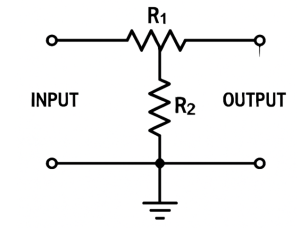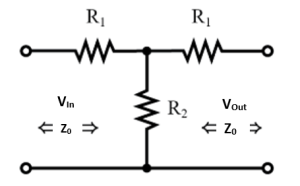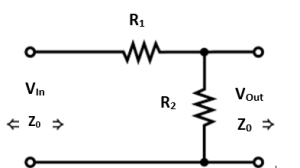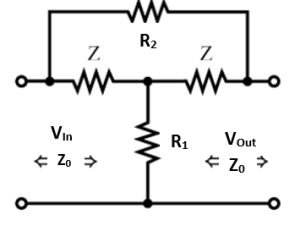What is Passive Attenuator?
Last Updated on August 20, 2025 by Sasmita
Introduction
In many electronic and communication systems, it is necessary to reduce the amplitude of a signal without significantly distorting its waveform. This process is called attenuation, and the devices used for this purpose are called attenuators.
A passive attenuator is a network made of resistors (and sometimes other passive elements) that reduces signal power without using any active components like transistors or op-amps. Since they are passive, they cannot amplify a signal or require external power — they can only attenuate.


Purpose of Passive Attenuators
Passive attenuators are used for:
-
Adjusting signal levels to match the input of other circuits (impedance matching).
-
Reducing noise and distortion caused by overdriving a circuit.
-
Calibrating measurement instruments.
-
Protecting sensitive components from excessive signal levels.
Characteristics of Passive Attenuators
A good attenuator should have:
-
Flat frequency response over the intended operating range.
-
Known attenuation level in decibels (dB).
-
Matched input and output impedance to avoid reflections (important in RF systems).
-
Minimal distortion.
Attenuation Measurement
The attenuation of a passive attenuator is usually given in decibels (dB) and is calculated as:

Since Vout<Vin, attenuation in dB is always negative (or described as a positive loss).
Example: If the voltage drops from 10 V to 5 V:
![]()
Types of Passive Attenuators
Passive attenuators are classified based on resistor arrangement:
1. T-Type Attenuator
-
Looks like the letter “T” in its resistor layout.
-
Suitable for balanced or unbalanced lines.
-
Common in low-frequency audio and instrumentation applications.

T-Type Attenuator
Design equations for symmetrical T-network (for characteristic impedance Z0 and attenuation A in dB):
Let:
![]()
Series resistors (R1):
![]()
Shunt resistor (R2):

2. Pi-Type Attenuator
-
Resistor layout looks like the Greek letter “π”.
-
Used in high-frequency RF applications for impedance matching.
-
Provides better high-frequency performance compared to T-type.

Pi-Type Attenuator
Design equations for symmetrical Pi-network:
Series resistors (R1):

Shunt resistor (R2):

3. L-Type Attenuator
-
Simplest type, consisting of two resistors (one series, one shunt).
-
Not symmetrical — used for matching two different impedances.
-
Ideal for simple applications where impedance matching is not critical.

L-Type Attenuator
4. Bridged-T Attenuator
-
Modified T-network with an extra bridging resistor.
-
Provides fixed attenuation while keeping the impedance constant.

Bridged-T Attenuator
Example Design
Design a 10 dB T-type attenuator for a system with Z0=50 .
Step 1: Convert attenuation to ratio:
![]()
Step 2: Calculate series resistor R1:
![]()
Step 3: Calculate shunt resistor R2:
![]()
Result:
-
Series resistors: 25.96 Ω each
-
Shunt resistor: 71.11
Advantages of Passive Attenuators
-
No power supply required.
-
Low noise introduction.
-
Simple and inexpensive.
-
Wide bandwidth possible.
Disadvantages
-
Only attenuation — cannot amplify.
-
Signal loss is permanent.
-
Power is dissipated as heat.
Applications
-
Audio mixing consoles.
-
RF communication systems.
-
Measurement and testing setups.
-
Television and broadcasting equipment.
-
Laboratory instruments.
Summary
A passive attenuator is a simple, reliable way to reduce signal amplitude without adding noise or distortion. By selecting the right configuration (T, Pi, L, Bridged-T) and calculating resistor values correctly, you can achieve precise attenuation with good impedance matching.